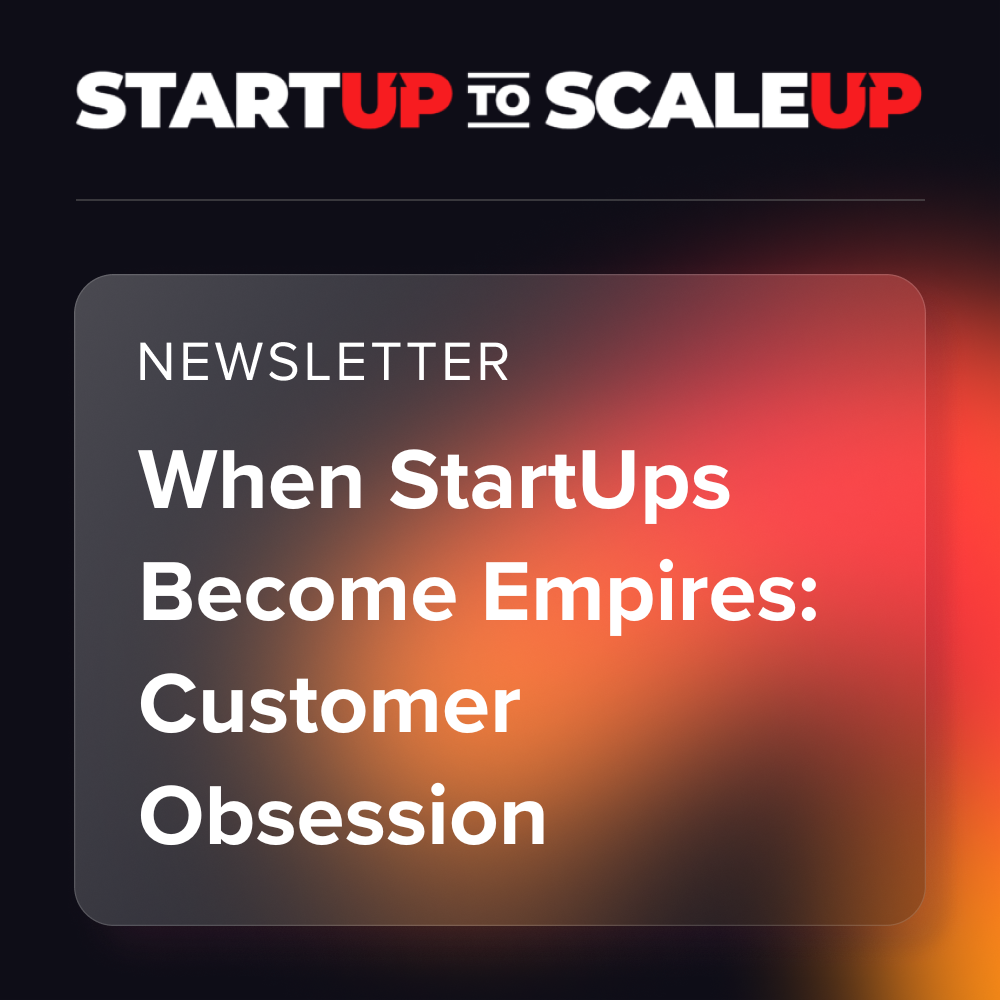When StartUps Become Empires: Customer Obsession
"Obsess over customers, not competitors." — Jeff Bezos

Dear Reader,
Startup success is measured by adaptability and revenue growth. Empire builders forge their legacy on relentless customer obsession, tracked but not defined by NPS. (tweet this)
NPS isn’t the protagonist. It’s a flawed indicator, imperfect but invaluable. It can be gamed, but does serve as a genuine feedback loop. Look past the score, the truth isn’t in the number but understanding why that number is what it is. When used with rigor and skepticism, NPS is an asset in your customer-centricity strategy. Its efficacy depends on the craftsman, not the tool itself.
Relentless customer obsession isn’t a tactic, it’s in the DNA of success; Amazon’s “Day One” mindset, Chewy’s thoughtfulness, and Zappos‘ happiness hustle show customer obsession isn’t fluff. Comcast, on the other hand, a quasi-monopoly has skated by with the worst service. As cord-cutting grows and alternative internet emerges, expect Comcast to pivot haaaaaard.
Book: “Delivering Happiness” by Tony Hsieh
Related Newsletter: The Unexpected Power of Doing Things that Don’t Scale
Think of revenue and growth as the scaffolding, not the skyscraper. An empire is built when customer sentiment is so profound it’s etched in stone, not just inked on monthly board reports.
Before a prospect even becomes a customer, your actions set the tone for your relationship. How you market, how you communicate, and your response time to initial inquiries. The first three dates with customer obsession.
The mantra for customer obsession: Engage to earn trust, love to fuel loyalty, listen to drive innovation, shadow to decode needs, celebrate to spark advocacy, deliver to secure excellence.
…which kind of converts to 8 Core Principles: Trust = Revenue, Loyalty = Renewal, Innovation = Referrals, Understanding = Resonance, Advocacy = Re-engagement, Excellence = Recognition.
You don’t know your product until your customers do. You know your solution; they live the problems. Their feedback is more than a data point, it’s a blueprint. Be the customer champion, be their voice relentlessly within your organization.
Ask yourself: does this decision enhance the customer experience? Perhaps a step further: make no decision that doesn’t positively impact your customer (accretive value to CTQ). “Happy customers solve everything” because a satisfied customer isn’t the goal; an evangelist is.
Looking for a nothing example with monumental results? Add live chat to your site (marketing and solution), staff it 24/7 with real people behind the AI, and watch everything change. Chat isn’t a feature; it’s a hotline to your customer’s reality. Manned correctly, it changes everything, literally in real-time.
Your obsession should be borderline stupid, the founder who finally hires a support human, but still, in the thick of fundraising, juggling a million tasks, manages to find the only Zendesk ticket that wasn’t great, and questions how it was handled in a @channel slack message. Good. It’s not misplaced focus; it’s the bull’s eye.
As you scale, your touch points with the customer will diminish, but your focus shouldn’t. The second you deprioritize the customer is the second the crumble countdown starts, it’s inevitable.
Heard this gem but can’t find the source: As a StartUp CEO, your time split is simple: 50% recruiting, 50% on customers and prospects, and 50% on everything else!! (tweet this)
Your super power this week? The ability to stay customer-centric despite the chaos. Burn this into your brain: Every internal metric is a proxy for customer happiness. KPIs are important, but they’re derivatives, not fundamentals.
Second-order revenue, recommendations from ex-customers in their new gigs, they’re not metrics; they’re a sign that you are resonating on a level past the transactional.
The question is simple: Is your customer happier today than yesterday? That’s literally it.
Don’t blink. Even for a moment.
— James


